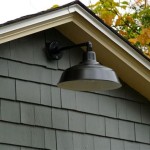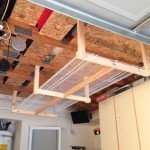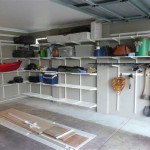```html
Making The Most Of Your Appliance Garage Kitchen
The appliance garage, a built-in cabinet designed to conceal small appliances and clutter, has become an increasingly popular feature in modern kitchen design. It offers a seamless and organized aesthetic, maximizing counter space and contributing to a clean, uncluttered environment. However, simply including an appliance garage in a kitchen remodel isn't enough to guarantee its effectiveness. Careful planning, thoughtful design, and a strategic approach to its use are crucial to truly maximizing its potential. This article will explore key considerations and strategies for optimizing the appliance garage in your kitchen, ensuring it becomes a valuable and functional element of your overall kitchen design.
The primary benefit of an appliance garage lies in its ability to declutter countertops. Bulky appliances like toasters, blenders, coffee makers, and even stand mixers can occupy significant counter space, making food preparation and other kitchen tasks more difficult. By housing these appliances within the appliance garage, countertops remain free and clear, creating a more spacious and efficient workspace. Beyond aesthetics, this decluttering contributes to a more hygienic kitchen environment, as fewer items on the counter translate to fewer surfaces to clean and sanitize.
The success of an appliance garage hinges on its accessibility. If it's difficult or inconvenient to access the stored appliances, the garage may become a neglected space, negating its intended benefits. The design and placement of the appliance garage should prioritize ease of use and ensure that appliances can be retrieved and used quickly and easily.
Optimizing Functionality Through Design and Placement
The design of the appliance garage should be tailored to the specific appliances it will house. Consider the dimensions of the appliances and ensure that the garage is deep and wide enough to accommodate them comfortably. Allow for adequate clearance around the appliances for ventilation and ease of access. Adjustable shelving within the garage can provide flexibility, allowing you to customize the space as your appliance collection evolves. Incorporating pull-out shelves or drawers can further enhance accessibility, especially for heavier appliances.
The type of door chosen for the appliance garage significantly impacts its functionality. Retractable (roll-up) doors, hinged doors, and lift-up doors each offer different advantages and disadvantages. Retractable doors disappear completely, maximizing access to the interior. Hinged doors are a classic choice, offering a clean and simple aesthetic, but they require sufficient clearance in front of the garage to open fully. Lift-up doors offer a modern and space-saving solution, but they may require more upper cabinet space.
Placement within the kitchen layout is also crucial. Ideally, the appliance garage should be located in a convenient and accessible area, near a power outlet. The placement should also consider the frequency with which different appliances are used. Appliances used daily, such as coffee makers, should be placed in a more accessible location than those used less frequently. Consider placing the appliance garage near the main food preparation area to streamline workflow.
Integrating power outlets within the appliance garage is essential for seamlessly operating appliances without having to move them to the countertop. This feature eliminates the need to constantly plug and unplug appliances, reducing clutter and improving convenience. Ensure that the outlets are properly wired and meet all safety standards. Consider incorporating a switch to easily turn off power to all appliances within the garage when not in use, further enhancing safety and energy efficiency.
Strategic Appliance Organization and Usage
Effective organization is key to maximizing the utility of an appliance garage. Avoid overcrowding the space, as this can hinder access and make it difficult to find the desired appliance. Group appliances based on usage frequency and function. Frequently used appliances should be placed within easy reach, while those used less often can be stored on higher or lower shelves.
Implementing a system for managing cords and cables is essential for maintaining a neat and organized appliance garage. Cord organizers, cable ties, and dedicated power strips can help to keep cords from tangling and creating a visual mess. Consider using cord management solutions that are specifically designed for kitchens, ensuring that they are heat-resistant and easy to clean.
Regularly decluttering and reorganizing the appliance garage is important for maintaining its functionality and preventing the accumulation of unnecessary items. Periodically review the contents of the garage and remove any appliances that are no longer used or needed. This practice will help to maximize the available space and ensure that the garage remains a useful and efficient storage solution.
Before committing to a specific appliance garage design, it is beneficial to create a detailed inventory of the appliances you intend to store within it. This inventory should include the dimensions of each appliance, as well as any specific requirements for ventilation or power. This information will help to ensure that the appliance garage is appropriately sized and designed to accommodate your needs.
Maintaining Cleanliness and Efficiency
The appliance garage, like any other area of the kitchen, requires regular cleaning and maintenance. Crumbs, spills, and dust can accumulate within the garage, creating an unsanitary environment and potentially attracting pests. Regularly wipe down the interior surfaces of the garage with a damp cloth and mild detergent. Consider using shelf liners to protect the shelves from spills and make cleaning easier.
Proper ventilation is important for preventing the buildup of moisture and odors within the appliance garage. Ensure that the garage is adequately ventilated, either through natural ventilation or by incorporating a ventilation fan. This is particularly important for appliances that produce steam or odors, such as coffee makers and pressure cookers.
Consider the lighting within the appliance garage. Adequate lighting is essential for easily locating and retrieving appliances, especially in dimly lit kitchens. Installing a small LED light within the garage can significantly improve visibility and functionality. Choose a light that is energy-efficient and easy to install.
By carefully considering these factors and implementing these strategies, homeowners can transform their appliance garage from a simple storage space into a highly functional and valuable asset in their kitchen. A well-designed and effectively utilized appliance garage can contribute to a more organized, efficient, and visually appealing kitchen, enhancing the overall cooking and living experience.
```
The Modern Day Appliance Garage A Moveable Backsplash To Hide Our Small Appliances Chris Loves Julia

How To Hide Small Appliances In Your Kitchen With An Appliance Garage

10 Appliance Garage Ideas For A Clutter Free Kitchen

The Modern Day Appliance Garage A Moveable Backsplash To Hide Our Small Appliances Chris Loves Julia

Kitchen Appliance Garage Diy Angela Marie Made

What Is An Appliance Garage How To Build

How To Diy A Kitchen Appliance Garage Semistories

15 Appliance Garage Ideas You Have To Try Hunker

25 Ideas For Kitchen Appliance Garages

Kitchen Appliance Garage Diy Angela Marie Made
Related Posts








